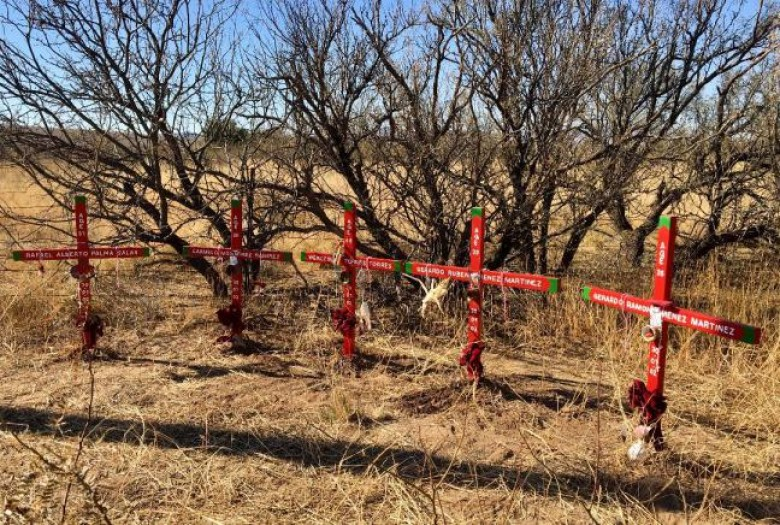A Samaritan crafts and paints simple crosses out of recycled materials. On this day, a white cross decorated with a tuna can designed to resemble a sun flower is ready to go. Etched on the cross are the words: No identificada and the date remains of a migrant body were discovered in the desert.
Samaritans are volunteers who function in varied groups across southern Arizona. Their primary purpose is to search the desert for migrants. They set up relief stations where water, food and supplies are left to assist the lost and the desperate. On my many visits to the Southwest, I have volunteered in these undertakings. But today was something different.
Led by a Catholic nun, this group organizes desert pilgrimages to mark the site where bodies are found. The Border Patrol locates the body, provides transport to the coroner’s office where they attempt to secure Identification and contact next of kin. Information regarding identity (if known) and location where remains were discovered is stored at the coroner’s office. Volunteers can access to this information.
My activist friend, an ardent Samaritan, lives on a ranch in the desert near the Mexican border. We arrive at Sister’s house one early, hot, dry, February morning to meet up with ten other Samaritans. We represent a varied group in terms of religious affiliation: an Episcopal priest, a Yaqui holy man, lapsed Catholics, atheists, agnostics and two Catholic nuns. We each carry something to help with the graveside ceremony: musical instruments, fast-drying cement, digging tools, snacks, lots of water - and the cross.
We hike in a mile and experience some of what the migrants endure. The desert, under the mid-morning sun, is unforgiving, the terrain harsh, rocky, with prickly ground plants and no real path. Unlike the migrants, we are fully equipped, watered and well fed. Though we only walk for an hour, some of us sound like children on a long car trip, “are we there yet? Can we stop for water?”
We arrive at the site, take a moment to acknowledge what happened here and then get down to business. We dig a hole, pour cement and plant the cross, facing east towards the rising sun. The Yaqui Holy Man (and a Catholic convert) conducts the service—a strange and wonderful hybrid of Native and Christian practice. We stand in a circle. He uses a large conch shell as a horn. We hold drums and maracas. In meditation, he asks us to face east, west, south and north which represent the cycles of life. He pours water in our hands and tells us to anoint our head and chest to open our mind and heart. He burns sweet-smelling copal, a resin, and an eagle feather directs the smoke over us—holy water and incense, familiar rituals from my childhood. Everyone is invited to speak. I have difficulty finding words. He chants and a guttural, ancient, mesmerizing sound emanates from him. We turn our faces to the sky to pray for the spirit of the young woman who perished.
And then, lucky people that we are, we hike out of the desert. Hot, dusty and reflective, we return to our cars and our comfortable lives.
Later, on the drive back to my friend’s house, I feel a part of something communal, spiritual, multi-cultural. I understand that I received more than I gave. I wonder regarding the significance of our efforts beyond the personal, and arrive at this: our spectacular Southwest deserts are becoming graveyards for our humanity. Lest we forget, the crosses stand to remind us.
[Appeared originally in My View in The Buffalo News]

